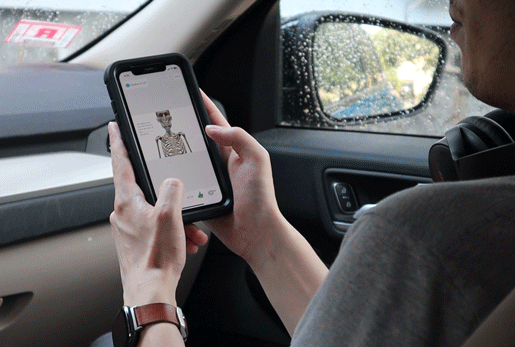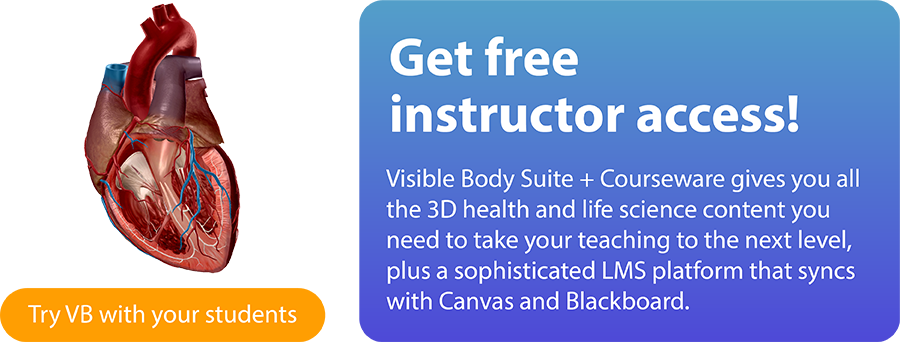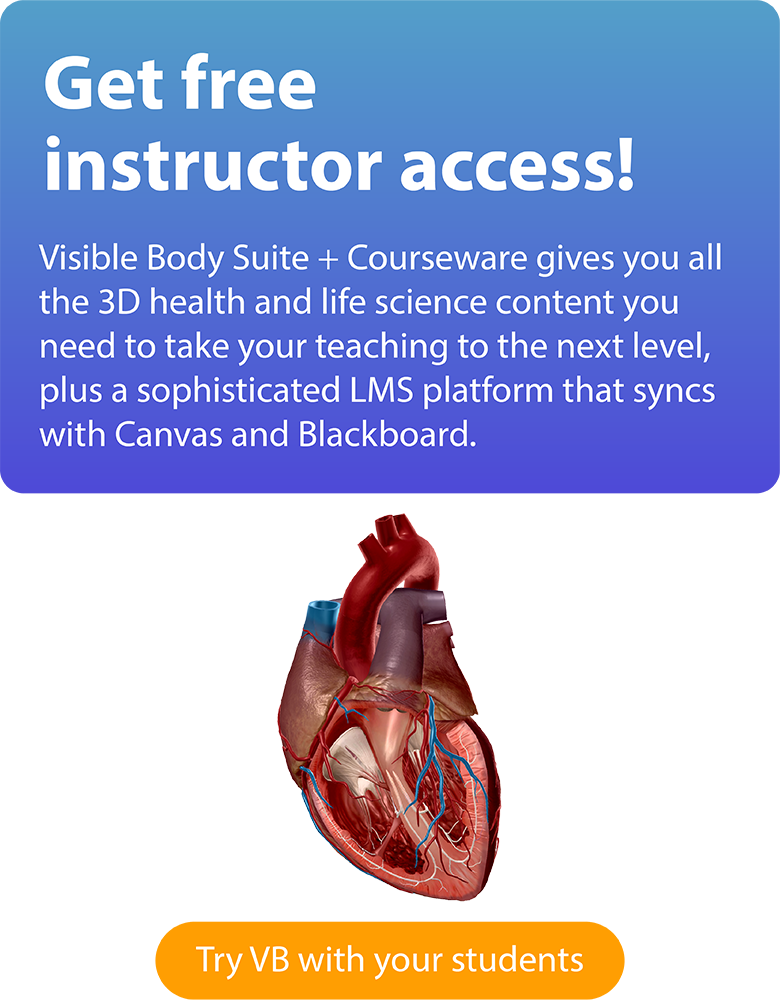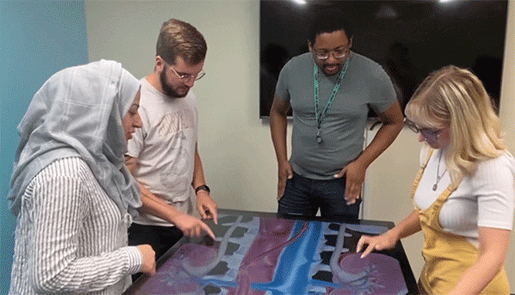Student-Centered Learning for Future Healthcare Professionals
Posted on 4/29/24 by Sarah Boudreau
Many health sciences instructors have embraced student-centered strategies in order to engage their students and develop the critical thinking and communication skills that are crucial to a career in healthcare. But what is student-centered learning, and does it work for health sciences students?
Student-centered learning can take many forms, but in essence, it’s a disruption of the classic, “sage on the stage” style of teaching typically characterized by lecture-heavy classes.
Student-centered learning puts more emphasis on students’ learning needs, facilitating learning experiences and student autonomy and accountability. Also known as student-led learning, this umbrella term can incorporate:
- Active learning
- Problem-based learning
- Group work
- The flipped classroom model
- Differentiated instruction
When future healthcare professionals enter the workforce, not only will their knowledge be tested, but they will be asked to make decisions and think critically. This makes it even more important that instructors shift away from passive learning and towards a more student-centered approach.
In this blog post, we’re going to take a closer look at some research surrounding student-centered learning for future physicians, nurses, and allied health professionals. Let’s dive in!
VB Suite on a ClearTouch interactive panel.
Student-centered nursing education
The last 25 years have seen a shift towards a more student-centered approach to teaching, which includes a greater focus on learning experiences. The authors of this 2023 article note that since this change has taken effect, student enrollment and diversity has increased. The authors examined the existing literature to better understand the role of student-centered teaching and learning in nursing education.
In the studies reviewed for this meta-analysis, students were usually asked to prepare for the lesson by doing reading or watching a prerecorded lecture at home. Many instructors asked students to engage in self-assessment, which can develop metacognitive skills.
The studies emphasized the importance of problem-solving in nursing education, and most of them incorporated group activities. These discussions typically centered around a case study or other practical scenario, breaking down problems as a group and coming up with solutions. This method is especially useful to prepare students for a career that relies heavily on teamwork and communication.
The authors found that student-centered learning in nursing programs
- Helps students understand the content instead of just relying on memorization
- Promotes lifelong learning
- Improves reasoning, problem-solving, and critical-thinking skills
- Improves communication skills, including a respect for others’ views
- Develops collaboration
At the end of the article, the authors drew a comparison between student-centered learning and patient-centered care.
“If students are exposed to the approach of student-centered learning in their nursing studies, the transition to caring for patients in a patient-centered way might be facilitated,” they write.
Getting started with student-centered teaching
Like the previous paper, the authors in this paper in Advances in Physiology Education also point out that active, student-centered learning benefits women and first-generation university students.
The authors here describe physiology-specific educational challenges: the large quantity of material (including physiology-specific jargon), the interdisciplinary nature of physiology, and students’ misconceptions of topics like respiratory and cardiovascular physiology. Student-centered learning offers opportunities for a more attentive physiology class that engages with higher-order thinking.
The authors pull together some recommendations for activities that can get the ball rolling with student-centered learning, including:
- Minute papers. In a minute paper, students are given 60 seconds to write responses to the day’s class session, typically in response to a prompt. These responses are anonymous and can be used by the instructor to “take the temperature” of a class and how they’ve learned.
- Think-pair-share activities. In a think-pair-share, students are given a prompt and take a few minutes to write down their response. Then, they partner with a peer to discuss the topic, and, finally, the pair presents their ideas to the class.
- The flipped classroom model. In a flipped classroom, students watch or read material as homework in lieu of an in-class lecture, saving activities and discussion for class time.
- Leading with a problem. The authors suggest beginning class with a problem or question that can be solved by the end of the lesson, noting that “Having students predict answers to questions, for which they may be lacking sufficient knowledge to answer correctly, increases retention of that information once it is presented to them.”
There are many benefits of student-centered learning, but some instructors and students will require some convincing before they give it a try. For example, for medical and other professional students who are well accustomed to memorization-style learning, it can be difficult to tell the difference between learning and memorization. These students’ preferences can be a barrier for physiology instructors who want to incorporate these strategies that involve higher-order thinking.
The authors conclude that “As students learn more by doing physiology than by listening to and memorizing physiology, the solid foundation that they construct will benefit their lives and future careers as it strengthens their lifelong learning goals.”
 Photo by Shutterstock.
Photo by Shutterstock.
Flipping physiology
In a 2023 paper in BMC Medical Education, the authors studied clinical medicine undergraduate students enrolled in a physiology course at Harbin Medical University, one of China’s top medical universities.
Six classes were randomly selected for the study, for a total of 131 students. Roughly half the students were taught through a traditional classroom as a control group, and the other half had a flipped classroom.
Classes in both groups were taught by the same teachers, and were taught using the same syllabus, calendar, and content. Both groups had access to the same online resource that included short videos and chapter tests in addition to written content.
The flipped classroom students worked through the materials at their own pace outside of class, and when they arrived in the classroom, they participated in small group discussions. A representative from each group then presented the group’s ideas to the class, where they received feedback from the instructors—a similar format to the think-pair-share activity in the previous section.
Looking at the data, the authors observed that:
- Flipped classroom students scored significantly higher on their online, non-exam work, like homework.
- Flipped classroom students scored significantly higher on their final exam.
- More flipped classroom students received an excellent grade (90-100 points) on the final exam than traditional classroom students
- Flipped classroom students’ scores on their online, non-exam work were positively correlated with their exam scores, but the same could not be said for the traditional classroom group.
- The vast majority of flipped classroom students thought that flipped classroom teaching improved their physiology knowledge acquisition, study abilities, and their collaborative, problem-solving, and communication skills.

Studying on the go with Flashcards in Visible Body Suite.
Computer-assisted, student-centered instruction with DPT students
This paper in Physical Therapy Education looks at the effect of computer-assisted, student-centered instruction in a cardiopulmonary practice pattern course.
As doctoral students at Indiana University, the 65 students in the study already had a firm understanding of anatomy, physiology, and pathophysiology, but this course asked them to use their knowledge in conjunction with problem-solving skills.
The students completed the first module of the course. Half the classes were taught in a traditional, lecture-based format, where a lecture was given via PowerPoint presentation. The PowerPoint slides were posted online ahead of time, and students were required to print them out and bring them to class. In the traditional classes, students spent about 10 minutes completing group work.
The other half of the classes were taught with electronic lectures: students were instructed to access the PowerPoint slides online and study them before class. When the students attended class in person, the sessions were half as long as those attended by the traditional class group. For an hour, students worked on problem-solving exercises in small groups, with the instructor present to facilitate learning.
Here are some findings that stood out:
- Students scored 10.4% higher on questions pertaining to content taught in student-centered class sessions.
- Students scored 29.3% better on questions that tested. comprehension, analysis, and evaluation pertaining to content taught in student-centered class sessions.
- Students did not show a preference for type of instruction.
The authors write, “The hybrid model used in this study had a pedagogical approach incorporating activities to counteract vigilance degradation, promote active engagement with the material, utilize technology, and facilitate independent learning by the utilization of peer-assisted learning without the use of traditional lecture. Therefore, one important educational outcome is to consider lecturing less if the goal is to develop higher level cognitive skills.”
Student-centered learning with Visible Body
Students and studies alike report that student-centered teaching is a practice that supports and engages students!
Visible Body gives students everything they need to succeed in life sciences courses and helps instructors create interactive content their students love. Instructors around the globe use Visible Body to engage their students in active learning through interactive assignments and detailed 3D models, and Visible Body’s customization and sharing features encourage collaboration and creativity in the classroom.


If you’re interested in student-centered learning with Visible Body, these blog posts offer some great ways to get started:
- Reach More Students: Differentiated Instruction with Visible Body
- 5 Ways to Gamify Your A&P Classroom with Visible Body
- Smart Assessments: Moving Beyond Exams with Dr. Cindy Harley
- 3 Ways to Use QR Codes in the Classroom with Visible Body Suite
Be sure to subscribe to the Visible Body Blog for more anatomy awesomeness!
Are you an instructor? We have award-winning 3D products and resources for your anatomy and physiology course! Learn more here




